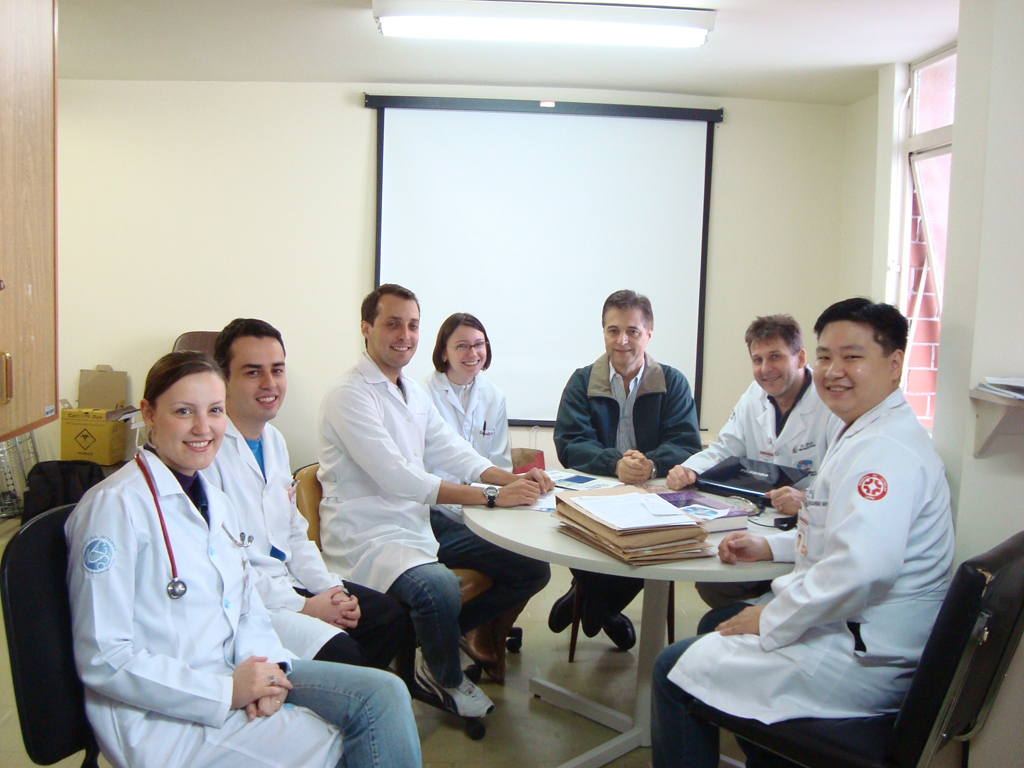
Curitiba Group 2009
Local Publications
The following publications used ISAAC data from the Curitiba centre:
- Ferrari FP, Rosário Filho NA, Ribas LF, Callefe LG. [Prevalence of asthma in schoolchildren in Curitiba - ISAAC]. J Pediatr (Rio J). 1998 Jul-Aug;74(4):299-305.Portuguese.
- Solé D, Melo KC, Camelo-Nunes IC, Freitas LS, Britto M, Rosário NA, Jones M, Fischer GB, Naspitz CK. Changes in the prevalence of asthma and allergic diseases among Brazilian schoolchildren (13-14 years old): comparison between ISAAC Phases One and Three. J Trop Pediatr.2007 Feb;53(1):13-21.Epub Sep 2006.
- Riedi CA, Rosário NA, Ribas LF, Backes AS, Kleiniibing GF, Popija M, Reisdorfer S. Increase in prevalence of rhinoconjunctivitis but not asthma and atopic eczema in teenagers. J Investig Allergol Clin Immunol.2005;15(3):183-8.
- Riedi CA, Rosario NA. Prevalence of allergic conjunctivitis: a missed opportunity? Allergy 2010; 65(1):131-132
Curitiba Centre
| Phase OneView Centre Details | Phase Two | Phase Three | |||
| Centre: | Curitiba, Brasil ( Latin America ) | ||||
| Principal Investigator: | Professor Nelson Rosário | ||||
| Age Groups: | 13-14 | Timeframe: | May 2001 to June 2001 | ||
| Sampling Frame: | 13-14yr: Some private and public schools in Curitiba District. The same sampling frame was used for both Phase One and Phase Three. | ||||
Personnel
Personnel
Professor Nelson Rosário
Rua General Carneiro 181 14 andar
Parigot de Souza, 1861
Brasil
Roles:
- Phase One Principal Investigator for Curitiba
- Phase Three Principal Investigator for Curitiba
Why was Curitiba selected for ISAAC
This is a well known University Center with teaching and research tradition, and previous involvement in national multicenter studies. ISAAC was the great opportunity for an ambitious multinational project. Curitiba is a prosperous metropolitan city with close to 2 million inhabitants, 4 medical schools and good public health care system.
Our experience of ISAAC
We participated in phases 1 and 3 with questionnaires only. The involvement of enthusiastic medical students (field workers), committed physicians and post-graduate students made the project well accepted by researchers, school personnel and children. Following the protocol was like playing music by partitur.
I have to mention as Professor of Pediatrics that co-authoring several ISAAC papers contributed to my CV and to the rank of our Institution among other medical schools in Brazil.
